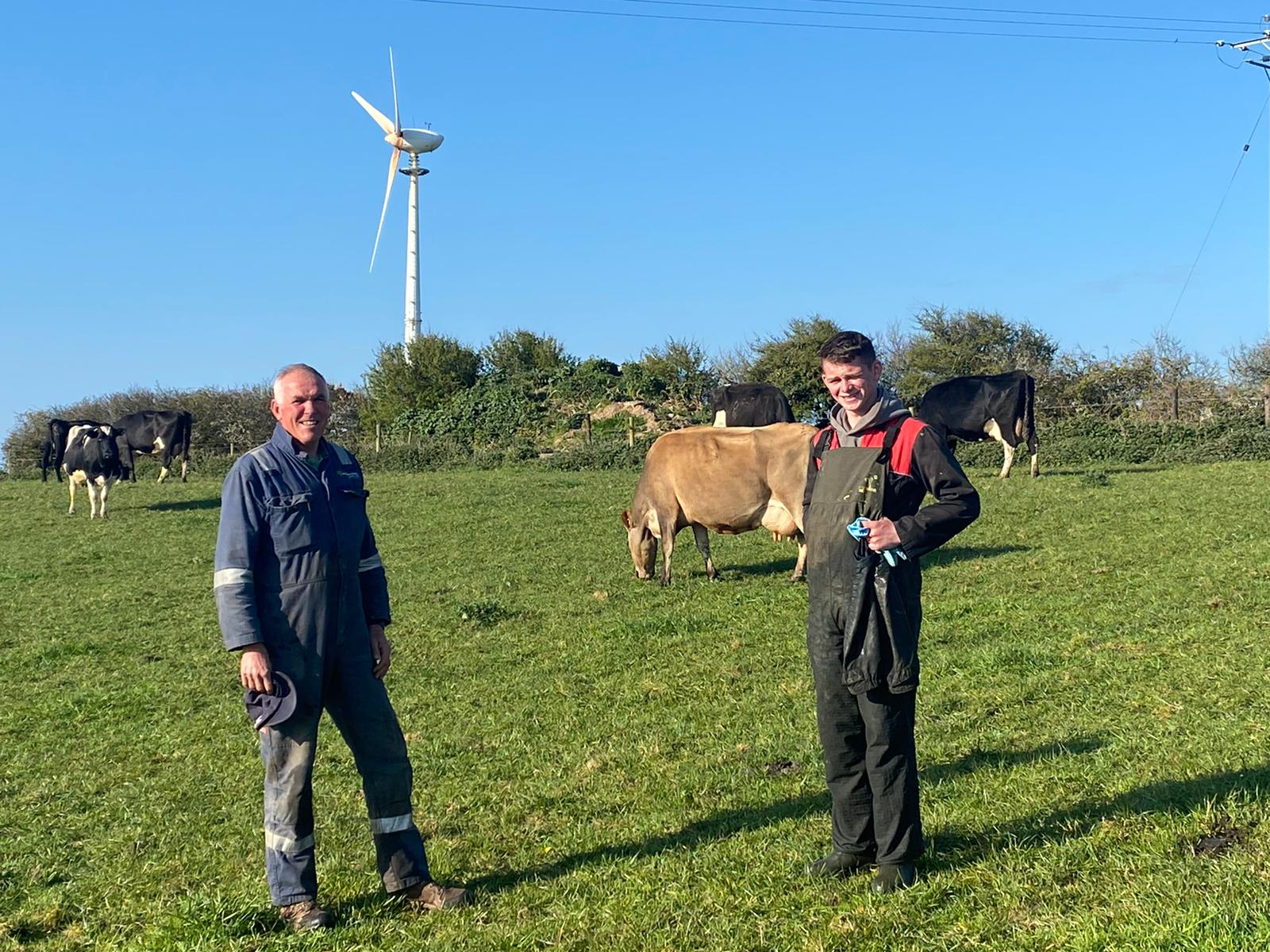- Home
- Knowledge library
- Meet the Forage For Knowledge contributor - Paul Richards
Meet the Forage For Knowledge contributor - Paul Richards
Paul Richards joined Forage for Knowledge contributors as a discipline to measure, test and record grass – he’s now using the results to drop fertiliser rates.
The business
Paul Richards’ family business, near Hayle in Cornwall, covers 486 ha based at Splattenridden Farm. They grow potatoes, cauliflowers and asparagus alongside an autumn block-calving dairy herd.
The farm
Altitude: max 150 m above sea level
Soils: light, free draining
Rain: 1,200–1,300 mm
- 172 ha total dairy block, including 86 ha milking platform
- Flexible 8 ha wholecrop from arable enterprise
- Self-feed silage with some easy-feed silage in the feed passage. Cows are fully housed 60–100 days/year
- Turnout end of January by day. Still grazing by day in mid-November
The cows
330 autumn-block calvers, starting mid-August with 200 calved by end of September. Kiwi-cross genetics. Target 7,000 litres with 4,000 litres from forage. Current average is 6,000 litres and 3,600 litres from forage, feeding 1.2 t/cow concentrates.
What have you learned about growing and managing grass?
“The discipline of measuring and recording has improved my ability to manage grass and be more efficient, maximising forage output per acre,” says Paul. “It’s amazing how accurate the Agrinet system is and it’s helped me to be brave as, in some years, we have grazed silage ground, it has re-grown and then we have cut it in the first week of May.”
In mid-May Paul can grow in excess of 120 kg DM/day and the farm averages 12 t DM/ha/year. He tests grass every week to find out that quality is 12 ME all season with crude protein levels ranging from 26–30%.
How has fertiliser use changed?
“Every year we have used less fertiliser and had the same response in grass growth. Twenty years ago, we put on 70 units/acre (87.5 kg N/ha) of nitrogen and now it’s 175 kg/ha of 27% N (44 kg N/ha) and 12% sulphate. We are using more sulphur and less nitrogen, spreading little and often. It’s saving money.”
Paul sees slurry as a very valuable product, using a dribble bar to apply it right to the base of the plant: “We analyse it and apply a rate equivalent to 15 units/acre of nitrogen (19 kg/ha),” he adds.
Reseeding and maintenance?
About every five years, Paul spends £10,000–£12,000 on updating track infrastructure, comprising rubble, topped with a crushed and rolled soft granite surface. He reseeds about 10% of the farm each year, using potatoes as a break crop to get rid of docks. “At the moment we have 22 acres in potatoes and this will then be drilled with grass in autumn. We also have some spare land for heifers that will be put into stubble turnips for feeding dry cows, followed by an autumn reseed.”
This year’s grazing plans?
“Haven’t a clue what the weather will do to grazing! We have 600 t of silage in stock – last year we ran out. If it’s dry, we can put more silage in if we have to,” he says. “We are also trying to manage heifers better and get them all up to weight. They block graze 24 ha in six blocks with mobile troughs. I’ve just started measuring their residuals and in June and July we can see growth rates over 1 kg/day on just grass.”


